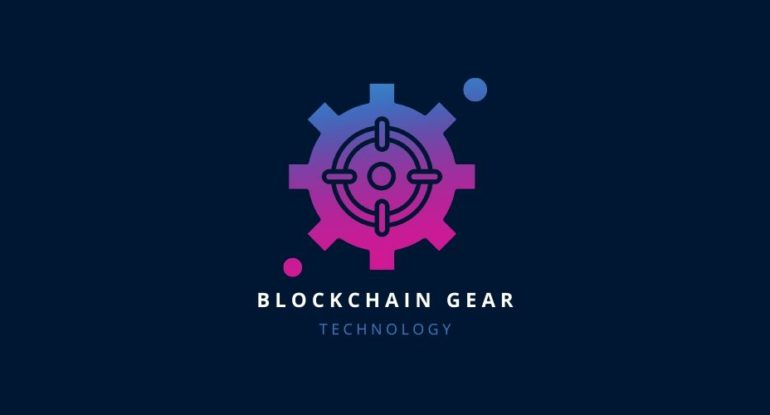Blockchain in Education: Improving Efficiency, Transparency, and Security

The global cryptocurrency industry was valued at $800 million in 2020 and is predicted to reach $5200 million by 2028, representing an almost 30% CAGR during the forecasted period 2021-2028.
The education system in India is undergoing a renaissance. Covid-19 compelled India’s school sector to embrace a digital teaching method. However, what began as a compulsion quickly swept through the whole educational system, and many academic institutions and students adopted it as their preferred way of teaching and learning. Even as pandemic-related limitations are gradually lifted, and educational institutions reopen for in-person sessions, most individuals advocate for a hybrid model of education in which online and offline education are combined. In India, there are more than 1500000 schools, and practically every one of them is gradually adopting some type of digital education.
Even in the traditional educational model, technology has made significant gains. In most schools, smart classrooms are quickly becoming the standard. Computers, laptops, smartphones, and other electronic devices have been around for a long time. India’s education system is undergoing a paradigm transition, as seen by the country’s expanding number of Edtech startups. There are already six edtech unicorns in the country. This is a strong indicator that there is a demand for services in the market and that money is moving into the sector.
Aside from all of the hoopla in the school sector, new technology has arrived that is poised to alter it. The technology driving the emergence and success of bitcoin is Blockchain. In less than two decades, cryptocurrency has become an economic phenomenon. The global cryptocurrency industry was valued at $800 million in 2020 and is predicted to reach $5200 million by 2028, representing an almost 30% CAGR during the forecasted period 2021-2028. Following its success in making cryptocurrency a global phenomenon, Blockchain is fast finding applications in a variety of different fields. Blockchain will definitely have a significant impact on the Indian education system.
India boasts the world’s highest student population. More than 250 million students are anticipated to be enrolled in Indian schools, with an additional 34.3 million enrolled in higher education institutions. Keeping track of students’ records is exhausting, time-consuming, and resource-intensive. Another time-consuming effort is keeping the records up to date. These documents are held on the university’s servers. Hacking into the servers and tampering with the student records is a possibility. Many people falsify their academic records and degrees in order to get admittance to colleges and jobs. Verifying documents is complex, time-consuming, and in some circumstances, impossible.
#Indian education system is set to integrate with #Ethereum #Blockchain, to provide tamper-proof diploma certificates to students. This massive initiative is taken by the Government of Maharashtra in partnership with Indian Blockchain #startup, LegitDoc. pic.twitter.com/Ktsqfb3SEw
— BlockchainedIndia (@blockchainedind) July 29, 2021
Blockchain is a technology that stores records or ledgers in the form of data blocks. These data blocks are encrypted and linked to other data blocks belonging to the same person or company. These blocks are heavily encrypted and stored in a decentralized way across numerous machines. When one data block is tampered with, the information in other blocks connected to it is altered, as are all the computers where the data is kept. This makes hacking blockchain technology unfeasible.
Blockchain technology can aid in the removal of these aspects from the educational system. Using the Blockchain to create student records can speed up and improve the process. The blocks are hack and tamper-proof due to their practically breakable lettering. The technique is made much more secure by the fact that the records are stored decentralized. The Blockchain offers pupils a digital identity and control of their papers. Students will be able to quickly demonstrate the validity of their academic achievements anytime they need to. Not only can Blockchain be used to keep track of academic performance, but it can also be used to keep track of attendance, health status, extracurricular activities, social behavior, sports activities, and so on. If records must be transferred from one educational institution to another, it can be done considerably more quickly and efficiently. The education industry will be far more transparent, honest, and accountable as a result of this.
Courses and evaluation systems can both benefit from blockchain technology. Teachers can utilize smart contracts technology to create course structures that require students to achieve specific criteria in order to pass a module and move on to the next. Students can also use Blockchain to authenticate their teachers’ and institutions’ credentials. It can also assist the educational system is evolving so that students have the freedom to combine major and minor services as they see fit.
Also, read – How Is Blockchain Being Used In Clearance And ICT Services?
The talk above demonstrates how Blockchain can improve the efficiency and transparency of the educational system. The quality of education in India will undoubtedly increase if inefficiencies in the system are eliminated. When phony diplomas and academic records become outdated, the proper people will have greater educational and professional chances. More significantly, people will be encouraged (or forced) to pursue academic journals, diplomas, and degrees through the proper channels. This would increase the demand for quality education in the country by making the country’s education system more legitimate and reliable.




























































